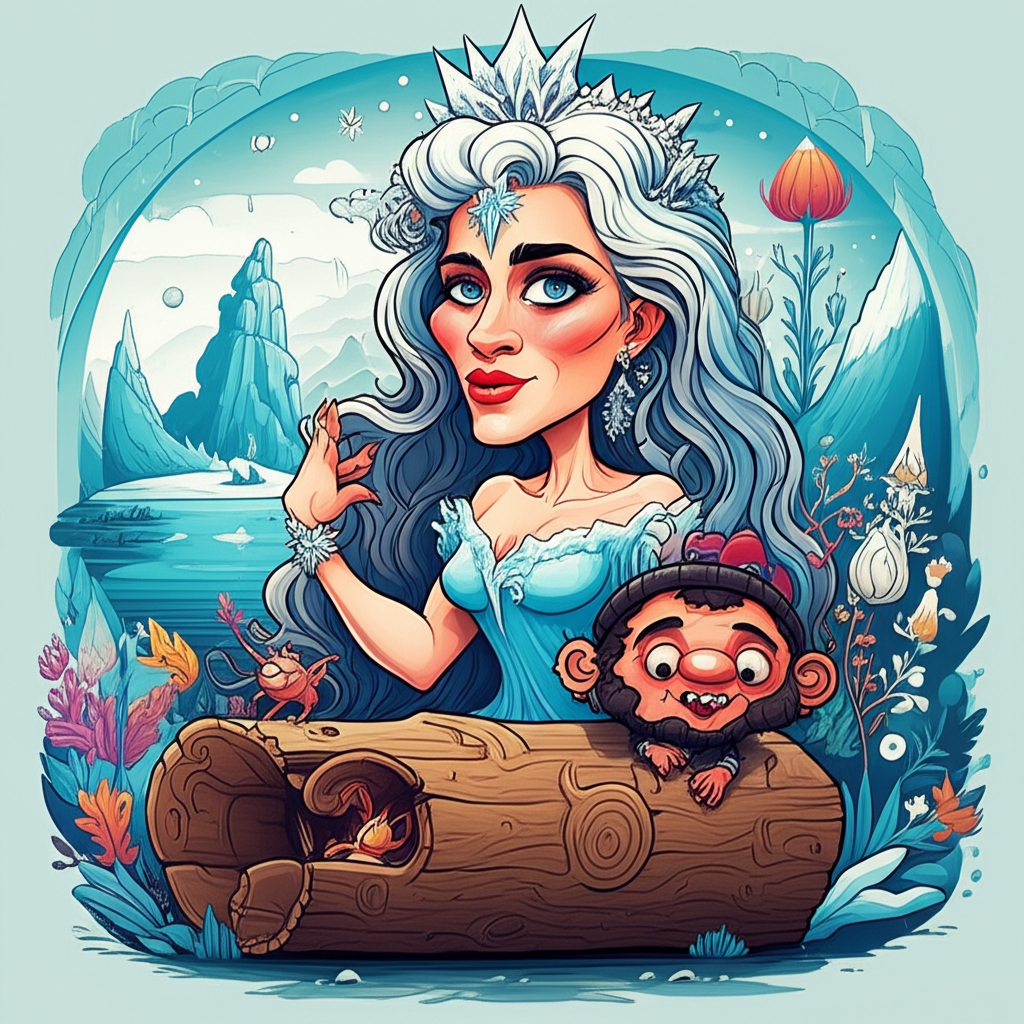
The vast tapestry of human imagination is woven with threads of myth and legend, stories that have been passed down through generations, offering glimpses into the worldview of ancient peoples. Among these enduring narratives, those originating from the Slavic cultures, particularly those of Eastern Europe, hold a unique resonance. They speak of a world deeply intertwined with the rhythms of nature, populated by beings both benevolent and fearsome, and governed by forces that were not always understood. The story of Jarilo, the Rusalka, and the mythical Buyan Island is one such tale, a potent echo from a time when the forests teemed with unseen spirits and the waters held secrets.
These narratives are not declarations of historical fact, but rather the profound expressions of ancient communities grappling with the mysteries of existence. They were shared around crackling fires, whispered in hushed tones during long winters, and sung in the fields during harvest, shaping the cultural identity and spiritual landscape of the people who told them.
The cultural milieu from which these tales emerged was largely agrarian, deeply connected to the cycles of the seasons, the fertility of the land, and the unpredictable moods of nature. The ancient Slavs, like many pre-industrial societies, viewed the world as alive with spirits and forces. Every element – the sun, the moon, the rivers, the forests, the very earth beneath their feet – was imbued with a distinct personality and power. This animistic worldview meant that humans were not separate from nature, but an integral part of a larger, interconnected web of life, often mediated by supernatural beings. The changing seasons, the bounty of crops, the perils of floods and droughts, all were understood through the lens of these spiritual forces.
At the heart of this particular legend lies a cluster of potent figures and places. Jarilo, in some Slavic traditions, is envisioned as a god of spring, vegetation, and fertility, a vibrant force of renewal and growth. He is often depicted as a young, handsome warrior, clad in white, riding a white horse, and carrying a sheaf of wheat. His arrival signifies the end of winter’s harsh grip and the burgeoning life of the warmer months. His essence is that of youthful vigor, burgeoning life, and the promise of abundance.
The Rusalka, on the other hand, is a more complex and often melancholic figure. Typically portrayed as a beautiful, ethereal maiden, she is often associated with water – rivers, lakes, and streams. Her appearance can be alluring, with long, flowing hair, often described as green or white, and eyes that shimmer with an otherworldly light. However, beneath this captivating exterior often lies a tragic history. Rusalki are frequently believed to be the spirits of drowned maidens, women who met a watery end, either by accident, suicide, or even murder. They are spirits of the unfulfilled, the lost, and the sorrowful, forever bound to the watery realm from which they cannot escape. Their symbolic attributes are multifaceted: they can represent the allure and danger of the natural world, particularly water, which is both life-giving and capable of immense destruction. They also embody themes of lost love, sorrow, and the lingering echoes of tragedy.
And then there is Buyan Island, a mythical, often inaccessible land that appears in many Slavic folktales. It is a place of potent magic, a liminal space where the boundaries between the mortal and the supernatural blur. Buyan Island is often described as being located in the middle of the ocean, shrouded in mist or fog, making its discovery a rare and significant event. It is sometimes depicted as a place where the sun rises and sets, a cosmic center, or a repository of powerful artifacts and knowledge. Its symbolic significance lies in its representation of the unknown, the realm of dreams and otherworldly power, and the ultimate source of magic and destiny.
The narrative of Jarilo, the Rusalka, and Buyan Island is not a single, monolithic story, but rather a constellation of beliefs and tales that coalesce around these figures. Imagine, then, the ancient world. The harshness of winter has finally begun to recede. The earth, once frozen and barren, stirs with a new energy. This is the time of Jarilo’s arrival, his radiant presence chasing away the lingering shadows of cold. He rides forth, a beacon of life, his touch awakening the dormant seeds and coaxing forth the first green shoots. The world rejoices in his awakening power.
Yet, as the days grow longer and the sun’s warmth permeates the land, whispers begin to emerge from the water’s edge. The Rusalki, their forms shimmering in the sun-dappled rivers and lakes, are drawn to the vibrant energy of spring. They are the embodiment of the waters’ capricious nature, their beauty a deceptive lure. Perhaps a young man, captivated by the melodic song of a Rusalka, ventures too close to the water’s edge, drawn by an irresistible enchantment. He might be lured into a fatal embrace, his life force extinguished by the cool, unyielding depths. Or perhaps, on a journey across the vast, unknowable sea, a mariner, lost and desperate, catches sight of the ethereal glow of Buyan Island through the swirling mists. He steers his vessel towards its shores, seeking refuge or perhaps a fabled treasure. On Buyan, he might encounter the Rusalki, their mournful songs a lament for their lost lives, or perhaps they are guardians of some ancient secret that the island holds. The island itself might be a place where the veil between worlds is thin, a place where one could petition the spirits for knowledge, or even confront one’s own destiny. The stories often weave together themes of love and loss, life and death, the earthly and the ethereal, all set against the backdrop of a world where such boundaries are fluid.
For the ancient peoples who told these stories, Jarilo, the Rusalka, and Buyan Island were more than just characters in a tale. They were symbolic representations of the fundamental forces that shaped their lives. Jarilo embodied the vital, life-affirming power of nature, the promise of renewal and prosperity that was so crucial for their survival. The Rusalka, with her dual nature of beauty and danger, represented the unpredictable and often perilous aspects of the natural world, particularly the seductive yet deadly allure of water. She could also symbolize the sorrow and unresolved grief that could linger in a community, the echoes of those lost. Buyan Island, as a place of mystery and magic, served as a potent symbol of the unknown, the liminal spaces where one could seek guidance, power, or encounter the divine. It was a place where the boundaries of reality were stretched, allowing for the exploration of profound existential questions.
In the modern era, these ancient myths continue to resonate, finding new life in various forms of artistic expression. Literature often draws upon the imagery and themes of Slavic folklore to craft tales of magic, adventure, and the human condition. Movies and television series have explored the enigmatic nature of the Rusalka, portraying her as a tragic figure, a vengeful spirit, or a seductive temptress. Video games, with their immersive worlds, often incorporate elements of Slavic mythology, allowing players to interact with creatures and explore landscapes inspired by these ancient stories. Cultural studies scholars delve into these myths to understand the historical context, the psychological underpinnings, and the enduring cultural significance of these narratives for Slavic peoples and beyond.
It is crucial to reiterate that these are ancient stories, products of human imagination and cultural interpretation. They offer valuable insights into the beliefs, fears, and aspirations of past societies. As Muslims, we recognize that the true Creator and Sustainer of all existence is Allah (SWT). Our understanding of the world and our place within it is rooted in divine revelation and Tawhid (the oneness of God). These myths, therefore, are appreciated for their cultural heritage and the rich tradition of storytelling they represent, not as accounts of divine truth.
The echoes of Jarilo, the Rusalka, and Buyan Island serve as a testament to the enduring power of human imagination and the profound desire to make sense of the world around us. They remind us of the intricate relationship between humanity and nature, the universal themes of life and death, love and loss, and the timeless quest for meaning. By understanding these stories, we gain a deeper appreciation for the cultural heritage that has shaped so many communities, and we celebrate the rich tradition of storytelling that continues to connect us to our past and inspire our future.





